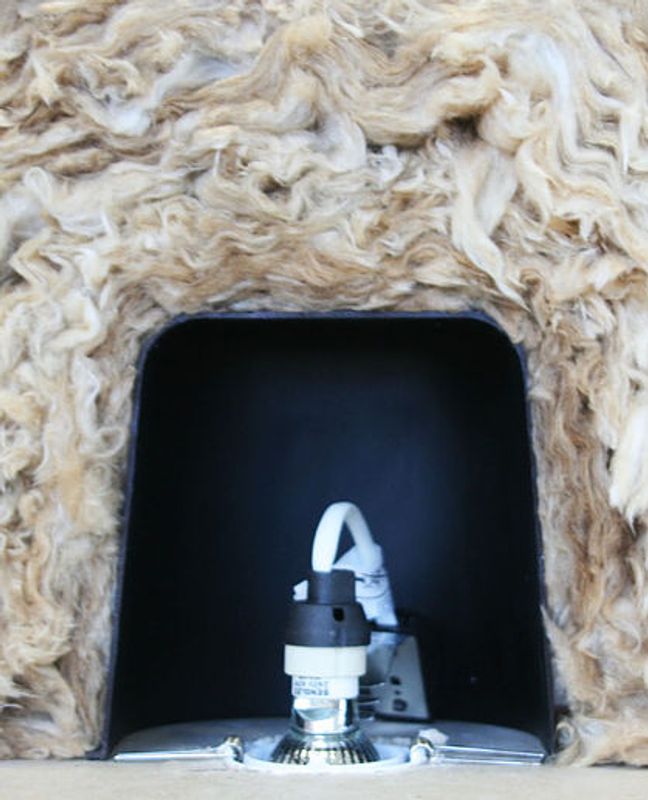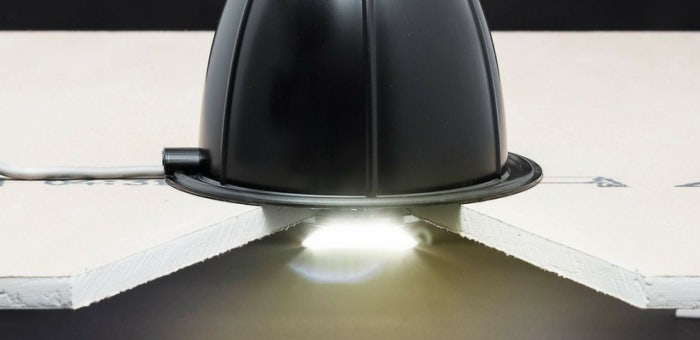Downlight covers are used to cover downlights in ceilings to reduce their effect on the building envelope.
When a downlight is installed with a cold space above it, heat from the room below escapes and cold air gets into the inhabited room.
In turn, this decreases the efficiency of loft or ceiling insulation by up to 30%.
The solution?
Installing downlight covers stops this heat from escaping by filling the gaps between the light fitting and the plasterboard. Downlight covers prevent heat loss and ultimately save money by making your home more energy-efficient.
Let’s find out more about them!
Table of contents:
What are downlight covers?
Downlight covers, also known as downlight hoods, allow for continuous insulation over and around the light fitting which improves the effectiveness of insulation and so meets building regulations.
Some insulation is combustible too so by isolating the light fitting, you isolate the light from combustible material which could otherwise contribute to the outbreak of a fire.
Benefits of downlight covers
Downlight covers are both practical and beneficial. However, it’s worth noting that the specific benefits and features of downlight covers can vary depending on the brand, model, and intended application.
When selecting downlight covers, it’s important to choose products that comply with local building codes and meet the required safety and performance standards.
Downlight covers help you to:
Increase insulation efficiency
Downlight covers are designed to minimize air leakage and improve the energy efficiency of recessed lights. They create an airtight seal around the fixture, preventing conditioned air from escaping through the gaps and reducing the loss of heating or cooling energy.
Reduce the amount of warm air leaking from a heated room
Recessed lights can create unintended gaps in the ceiling, allowing air to escape or infiltrate from unconditioned spaces (such as attics) or adjacent rooms. Downlight covers effectively seal these gaps, reducing air leakage and improving indoor air quality by preventing the transfer of dust, allergens, and pollutants between different areas of the building.

Isolate the lights from potential fire risks
In some jurisdictions, building codes require the use of downlight covers for fire safety purposes. These covers act as a barrier between the recessed light fixture and the surrounding combustible materials in the ceiling. They can help to limit the spread of fire by containing it within the recessed light enclosure.
Keep out spiders, insects, dust and dirt from the room below
Downlight covers create an effective barrier between the loft and the room below, stopping pests from entering. They also keep dirt and dust out.
Prevent water vapour from going into cold spaces and rotting any timber
In humid environments, downlight covers can serve as a moisture and vapour barrier. They help to prevent moisture from entering the ceiling cavity and potentially causing damage to the insulation or other building materials. This feature is particularly useful in bathrooms, kitchens, and other areas prone to high humidity levels.
Easy to install
Downlight covers are generally easy to install and can be retrofitted onto existing recessed light fixtures. They often feature spring-loaded clips or other mechanisms for secure attachment. Additionally, they are typically designed for easy access, allowing for convenient maintenance or replacement of the light bulbs.
We recommend using them alongside LED downlights to get the most energy savings across the setup.
How do I know if my downlight is fire rated?

Fire-rated downlights are designed to provide a certain level of fire protection by limiting the spread of fire and heat through the ceiling. If you have concerns about fire safety or compliance, it is always recommended to consult with a professional for guidance.
To determine if your downlight is fire rated, you can follow these steps:
Check the manufacturer’s documentation
Look for any information provided by the manufacturer of the downlight. This information may be available in the product manual, packaging, or on the manufacturer’s website. Look for specifications or certifications related to fire rating.
Look for a fire rating label
Some fire-rated downlights have a label or marking on the product itself indicating their fire rating. Check the surface of the downlight, including the frame or trim, for any labels or markings that mention fire rating or fire resistance.
Inspect the installation location
Fire-rated downlights are typically designed for use in fire-rated ceilings. If you have access to the ceiling cavity, you can inspect it to determine if there are any additional fire protection measures in place, such as fire-rated enclosures or intumescent materials











